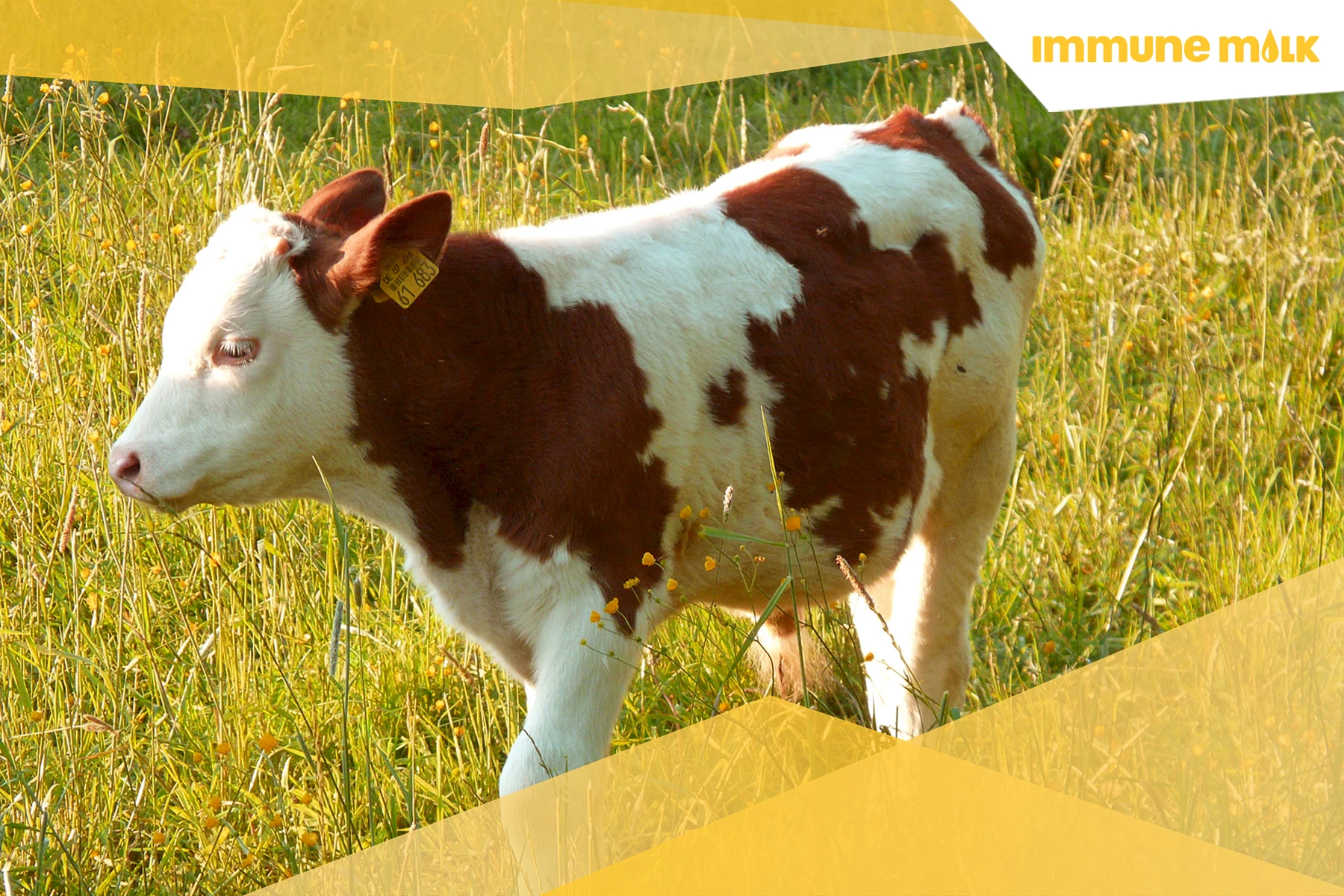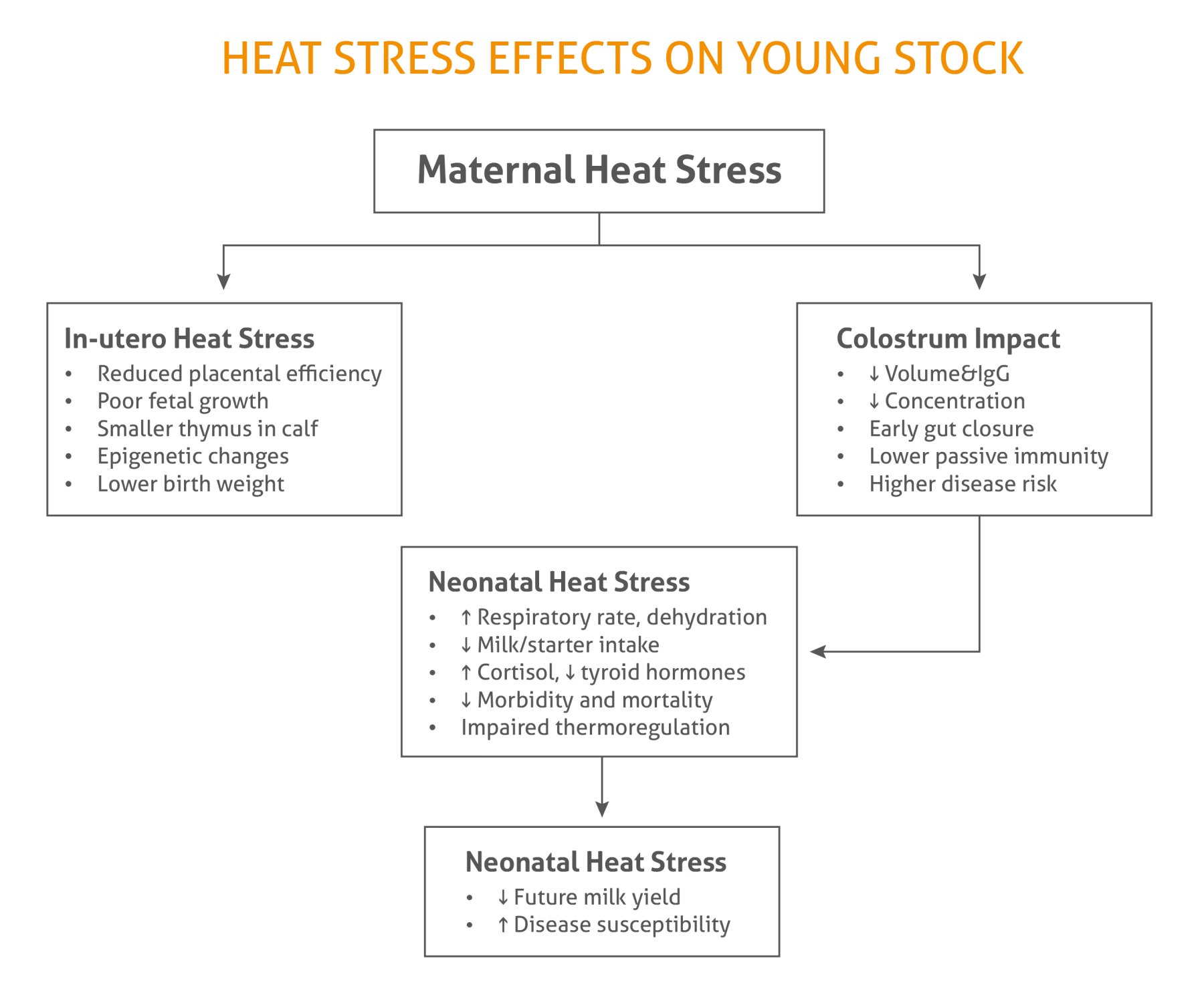
Heat stress occurs when the animal’s internal heat load exceeds its ability to dissipate that heat into the environment. In dairy breeds like Holsteins, this imbalance is intensified by their limited skin surface area, thick hair, and low sweat gland activity.
In young animals, the impact is even more severe:
Colostrum is more than the first milk—it’s a neonate's initial immune defense system. Unfortunately, heat stress during late gestation in cows significantly reduces both the volume and quality of colostrum. Studies have shown that:
Heat stress does not wait for birth to make its mark. Calves exposed to in-utero heat stress (IUHS) –especially during the final trimester – show long-term developmental impairments:
While it is nearly impossible to fully prevent heat waves, strategic interventions can mitigate damage:

Even with the best efforts, there are limits to what conventional management can achieve. This is where advanced colostrum supplements and plant-based functional additives come into play.
Emerging research highlights the importance of targeted nutritional support for neonatal calves, especially those affected by in-utero heat stress (IUHS). These calves often show impaired immunoglobulin absorption, increased gut permeability, and elevated oxidative stress. Enhancing passive immunity transfer and maintaining gut integrity are critical to improving survival and long-term productivity.
Recent advances in colostrum processing now allow for immunoglobulin-rich supplements free from specific antibodies like IBR, tailored for optimal bioavailability even under compromised absorption conditions. Similarly, certain plant-based feed additives have demonstrated the ability to stabilize intestinal tight junctions, modulate inflammatory pathways, and support hepatic detoxification. Products such as Sangrovit® and gently produced colostrum powders (Immune Milk) are being explored within these contexts as part of integrated calf health strategies.

Dr. Oguz Calisici studied veterinary medicine in Germany and Turkey. After completing his doctoral Thesis at the University of Hannover, he continued working at the university in the areas of biotechnology and artificial insemination. After working as a practical vet in Germany, Oguz was the managing director of a large dairy company in Turkey. At Phytobiotics, Oguz has taken over the product management of Immune Milk.
Contact our experts or send us a message. We will contact you as soon as possible.